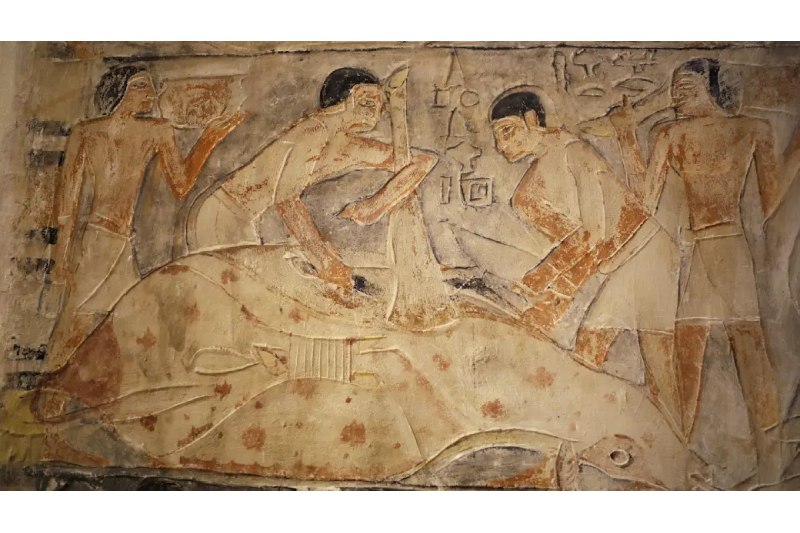Vibrant Depictions of Everyday Life Found in a 4,300-Year-old Egyptian Tomb

Vibrant murals depicting everyday life in ancient Egypt have been found in a tomb that is over 4,300 years old.
The tomb, called a mastaba, was discovered during a recent Egyptian-German archaeological expedition in the pyramid necropolis of Dahshur, around 25 miles south of Cairo.
The southernmost of the Old Kingdom’s major pyramid necropolises, Dahshur is located close to Memphis, the former capital. The Red Pyramid and the so-called Bent Pyramid, two enormous pyramids built by King Sneferu, are the primary draws.
The rectangular mastaba is approximately 26 feet by 39 feet (8 meters by 12 meters) and is constructed of unfired mud brick. It has seven burial shafts and an additional shaft for ceramic bowls and other objects used in funeral rites.
Inscriptions on a large false door made of limestone state that the tomb belonged to Seneb-nebef, a man who oversaw the affairs of the palace district’s citizens, and his spouse, Idut.
The shape of the mastaba and the images, inscriptions, and ceramics discovered within indicate that it was made around 2,300 BCE, at the end of the 5th or the start of the 6th dynasty.
The trip was conducted by Stephan Seidlmayer, a former director of the German Archaeological Institute in Berlin.
“The corridor and the cult chamber were decorated with subtle paintings on mud plaster – a rarity in the Dahshur necropolis,” the man wrote in an email. Many photos have survived despite the massive destruction. In addition to depicting scenes from everyday life, such as donkeys on the threshing floor, ships on the Nile, and a marketplace, they also have images of the tomb’s owner and his spouse in front of the sacrifice table and servants bringing gifts for the mortuary cult.
“In their elegant forms and perfect execution, the pictures offer valid evidence of the artistic milieu of the capital region of the developed Old Kingdom.”
The owner of the tomb “held several positions in the royal palace in the administration of tenants,” according to an announcement from the Egyptian Ministry of Tourism and Antiquities, while his wife “held the titles of Priestess of Hathor and Lady of the Sycamore.”
Since 1976, the German Archaeological Institute Cairo has been conducting excavations at Dahshur. The Old Kingdom’s King Sneferu and the Middle Kingdom’s King Amenemhat III’s pyramids were the main focus of the first phases.
However, the focus of more recent excavations has been on the tombs of notable politicians, clergymen, and administrators from the same periods.
Seidlmayer and his team will continue to excavate the site “in an attempt to search for more secrets of this area,” the Egyptian Ministry of Tourism and Antiquities said in its statement. It added: “Cleaning and documentation work will be carried out on the tomb and its inscriptions during the coming period.”